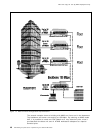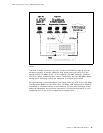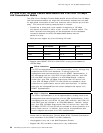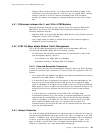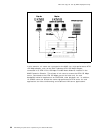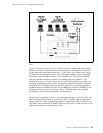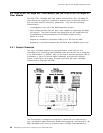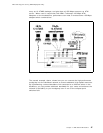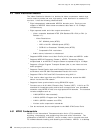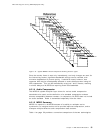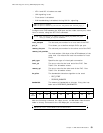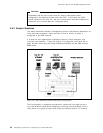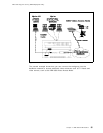
This soft copy for use by IBM employees only.
4.6 Video Distribution Module
The Video Distribution Module is a double-slot video concentrator module that
can be used to provide low-cost, high-quality, video distribution to standard TV
monitors. It has the following characteristics:
•
Eight independently addressable MPEG-2 decoder ports. Each port can
support an MPEG-2 video stream encoded at data rates of 1.5-15 Mbps
simultaneously.
•
Eight separate audio and video output connections:
− Video: composite baseband NTSC (EIA Standard RS-170A) or PAL (in
Release 1.1):
- Video Resolutions:
•
SIF: 352x240 pixels (NTSC)
•
HHR or Half-D1: 352x480 pixels (NTSC)
•
CCIR-601 or Broadcast: 704x480 pixels (NTSC)
•
Comparable PAL resolutions
− Audio: stereo, balanced or unbalanced
•
Supports MPEG-2 Main Level, Main Profile (4:2:0) video and MPEG-1 audio.
•
Supports MPEG-2 Elementary Stream or MPEG-1 Elementary Stream
encapsulated in an MPEG-2 Transport Stream at speeds of up to 15 Mbps.
•
Supports a Single Program Transport Stream (that is, one video and one
audio program).
•
Supports Closed Caption data and Extended Data Services information in
accordance with
EIA 608: Recommended Practice for Line 21
.
•
Supports ATM for PVC and SVC Connections using UNI 3.1.
•
Can receive video input from any ATM device that can access the 8285
switch via the the ATM network.
•
Supports frame synchronization using GENLOCK inputs.
•
Functions as an H.310 AAL-5 Receive-Only Terminal (ROT). H.310 is an ITU
standard for broadcast-quality audiovisual communication over broadband
networks using MPEG-2 video over high-speed ATM networks. The standard
includes subparts such as:
− H.262 (MPEG-2 video standard)
− H.222.0 (MPEG-2 Program and Transport Stream)
− H.222.1 (MPEG-2 streams over ATM)
− Various audio compression standards
•
Can be monitored, but not configured via the 8285 ATM Control Point.
4.6.1 MPEG Fundamentals
MPEG-2 is an International Telecommunication Union (ITU) standard for
digitizing, compressing, and multiplexing video and audio information. The
predecessor to MPEG-2 is MPEG-1, which is widely used in low-end video and
PC software-based encoding and decoding environments. MPEG-1 is a desktop
48 ATM Workgroup Solutions: Implementing the 8285 ATM Switch



